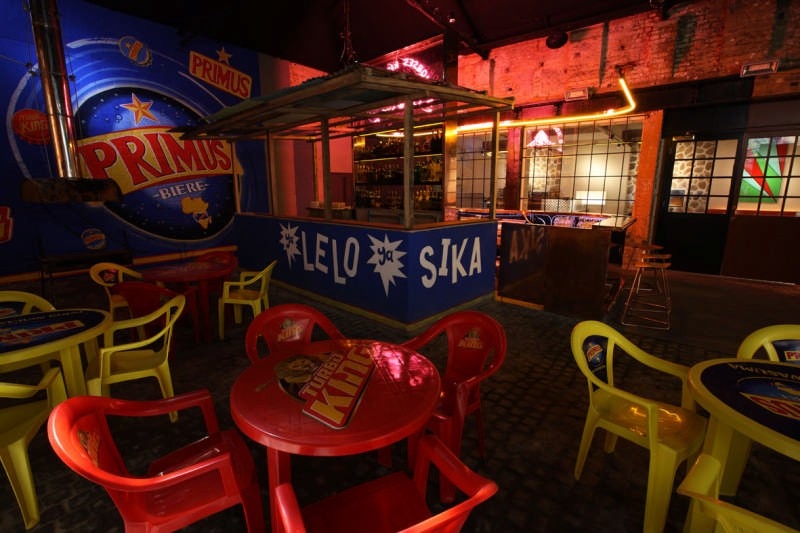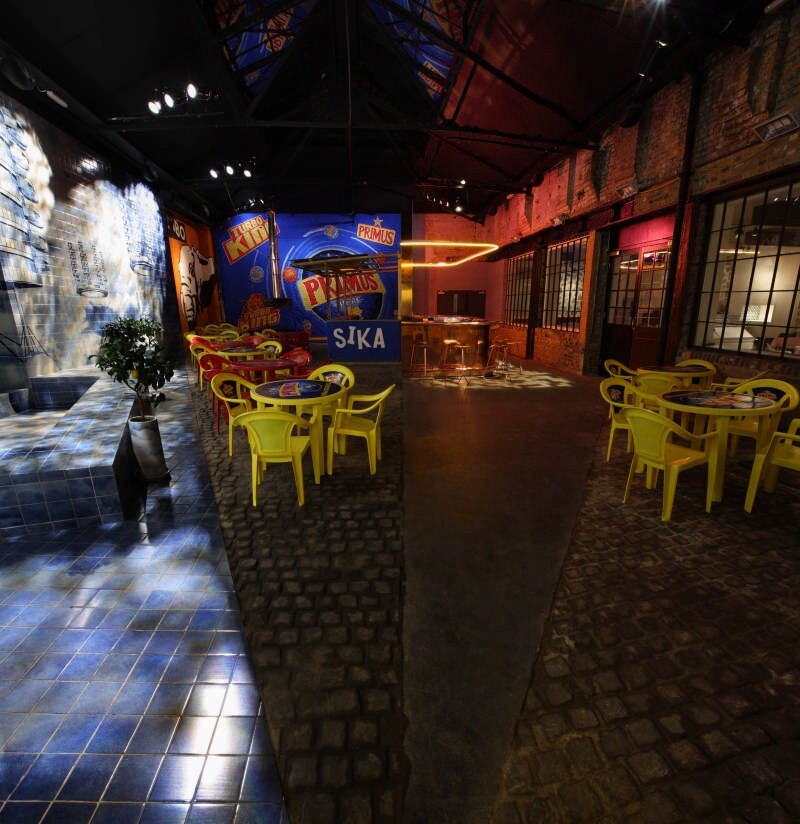The club consists of three spaces: bar, restaurant and dance club. The artist has divided each area into equally sized Western and Congolese parts on a decorative and functional level, generating an inspiring perspective on double identity as well as on cultural coexistence. Moreover, the different sections have been conceived and designed to represent the most challenging elements of both cultures, encompassing music, food and visual aesthetics.
In the restaurant Congolese and Western food is served on Congolese tablecloths or on Kram and Weisshaar’s acclaimed Breeding Tables, each of which is unique. The restaurant also includes outstanding art works from the West (paintings by Carla Accardi and Olle Baertling, a relief by Louise Nevelson, an embroidered map by Alighiero Boetti and a silkscreen on paper by Andy Warhol) and from Congo (the stage dress of the guitarist Luambo Makiadi, a.k.a. Franco, a painting by Mosengwo Kejwamfi, a.k.a. Moke the Painter, Kinshasa, a Cheri Samba painting). The Double Club is the only place in London where you can choose between a Liboke na mbisi (fresh fish wrapped and stewed in large leaves) and a range of extraordinary Western dishes, all made of special ingredients combined in an original yet simple way.
In the central courtyard bar area, there are two Western portions and two Congolese: a large tile garden with Portuguese azulejos (depicting a flying city originally drawn by Russian architect Georgi Krutikow in 1928) and a copper bar with a pink neon sign saying Two Horses Riders Club; another bar with coloured plastic chairs, parasols, and wall paintings of beer advertisements, where Congolese beer can be enjoyed and a reproduction of Cheri Samba’s J’aime les Couleurs enlarged to a surface of 7 x 4 m.
In the dance club, the DJ plays alternately Congolese and Western music on a circular dance floor which slowly revolves at about one turn per hour. When the DJ is in the Western part of the room, ‘Western’ music is played, while as coming into the Congolese part it will switch into Congolese Rumba, Wenge or Ndombolo. Furthermore, once a week the Club will present the best of contemporary Western and Congolese music live, showcasing both local and international bands.
The tradition of fashion-led, transient clubs in London is strong and the city’s nightclubbing pedigree, its cosmopolitan attitude and its rich musical heritage will make it a compelling location for The Double Club.
Photos: Attilio Maranzano
Courtesy of Fondazione Prada, Milan





